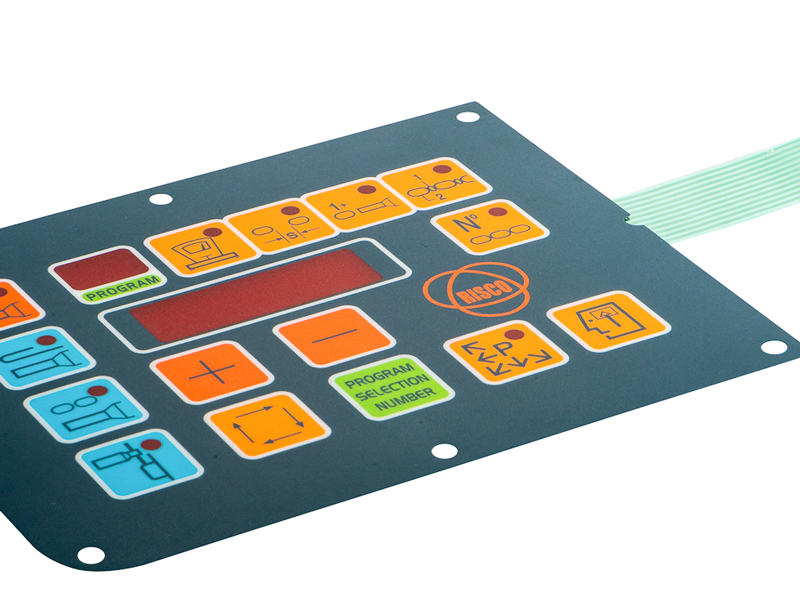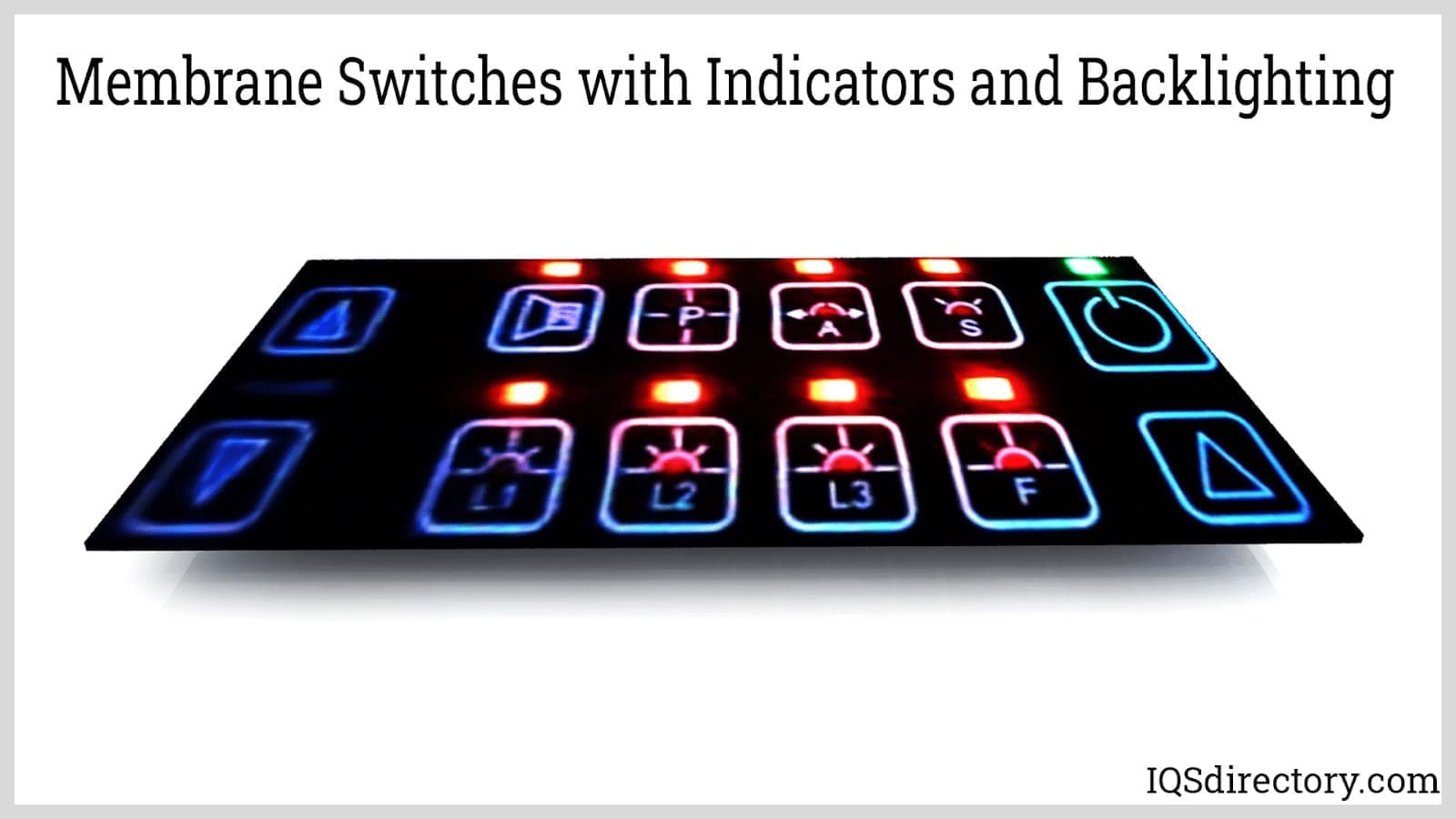A Comprehensive Guide to Membrane Switch Design and Manufacturing
Wiki Article
Recognizing Membrane Changes: The Key to Long Lasting and Reputable Controls
Membrane layer switches over represent a vital aspect of contemporary user interface style, mixing performance with resilience in various applications. These versatile parts not just facilitate user communication yet are likewise crafted to hold up against the rigors of demanding atmospheres, from clinical gadgets to commercial equipment. Understanding their building, procedure, and the myriad advantages they provide is necessary for developers and designers alike. As we check out the details of membrane layer switches, it becomes clear that their role in improving control systems is both intricate and extensive, questioning about exactly how finest to utilize their capabilities in future developments.
What Are Membrane Buttons?
Membrane buttons are an advanced option in the realm of interface modern technology, incorporating functionality and design seamlessly. These tools act as a user interface in between individuals and digital systems, integrating numerous components right into a portable style. Commonly built from adaptable, slim layers of products, membrane layer buttons are made to reply to touch, making it possible for customers to connect with machinery and digital devices properly.The key elements of a membrane switch include a printed circuit layer, graphic overlay, and a spacer layer that protects against unexpected activation. The graphic overlay can be personalized to mirror brand identity or customer choices, enhancing aesthetic appeals while making sure functionality. Membrane layer buttons are frequently used in various applications, including clinical gadgets, consumer electronics, and industrial equipment, owing to their resilience and resistance to ecological factors such as wetness and dust.
One of the crucial advantages of membrane buttons is their capability to withstand deterioration, making them optimal for high-traffic environments. In addition, they are lightweight and need marginal space, enabling for innovative layouts in item growth. On the whole, membrane layer switches over represent a effective and practical selection for modern-day electronic user interfaces, weding technology with user-centric style concepts.

Exactly How Membrane Switches Work
The operation of membrane switches hinges on an easy yet effective device that translates customer input right into electronic signals. When an individual presses the switch, the top layer deforms, allowing a conductive aspect in the circuit layer to make contact with a matching conductive pad on the underside of the visuals overlay.The layout of membrane buttons can differ, however they commonly incorporate domes or tactile components to provide feedback to the individual, boosting the total experience. The materials utilized in membrane layer switches, such as polyester or polycarbonate, add to their sturdiness and resistance to environmental variables, including dampness and dirt. The published circuits are commonly enveloped, which protects them from wear and tear over time.

Advantages of Membrane Switches
Among the primary benefits of membrane layer switches is their flexibility in style, enabling them to be tailored to fulfill certain individual demands and visual requirements. This flexibility encompasses different sectors, where different forms, sizes, and colors can be utilized to improve individual communication and aesthetic charm.Additionally, membrane switches are known for their sturdiness. Constructed from robust products, they are immune to dust, dampness, and physical wear, which significantly prolongs their lifespan compared to standard mechanical buttons. This longevity makes them especially appropriate for high-traffic atmospheres and applications needing longevity.

Furthermore, membrane layer switches offer a structured profile, leading to a thinner style that can be integrated right into different gadgets without including bulk. This attribute not just improves the visual charm yet also adds to a much more ergonomic item layout.

Applications of Membrane Layer Switches
Flexible and straightforward, membrane switches find applications across a wide variety of markets, including medical gadgets, customer electronic devices, and industrial tools. In the clinical field, these switches are indispensable to devices such as diagnostic tools, client surveillance systems, and infusion pumps, where dependability and convenience of cleansing are essential. Their capability to maintain and endure severe settings performance makes them excellent for such applications.In customer electronic devices, membrane buttons are made use of in items like microwaves, cleaning makers, and remote controls - membrane switch. Their sleek design permits intuitive customer interfaces, boosting the total customer experience while giving toughness and resistance to damage
Commercial devices likewise takes advantage of membrane buttons, especially in control panels for machinery and automation systems. These switches offer protection versus dust and moisture, ensuring constant performance in challenging environments. Furthermore, their adjustable functions allow manufacturers to customize them to particular operational demands, boosting performance and functionality.
Choosing the Right Membrane Layer Change
When choosing a membrane layer switch, it is why not look here important to think about numerous elements that affect performance and viability for certain applications. The primary considerations include environmental problems, tactile comments, toughness, and style specifications.
First, examine the operating setting; buttons subjected to dampness, chemicals, or extreme temperatures call for particular products to make certain longevity and functionality. Next, examine the need for tactile comments. Relying on user interaction, some applications may take advantage of a tactile reaction to verify activation, while others may favor a non-tactile design for aesthetic reasons.
Toughness is another important aspect; membrane switches should be created to withstand constant use, effects, and abrasion. Make certain the chosen button can sustain the expected lifecycle, particularly in high-usage scenarios.
Conclusion
In final thought, membrane switches over function as important components in the style of reliable and durable control systems across numerous industries. Their compact layout, incorporated with durable construction and customizable attributes, boosts customer interaction while ensuring longevity in requiring atmospheres. The convenience of membrane layer changes enables for tailored options that satisfy particular operational needs, strengthening their importance in modern innovation. membrane switch. As industries proceed to develop, the importance of incorporating effective membrane switch remedies can not be overstated.Membrane switches over represent an essential facet of contemporary user interface style, blending functionality with durability in numerous applications.Membrane layer switches are an innovative solution in the world of user interface innovation, integrating capability and style flawlessly. Normally built from adaptable, thin layers of materials, membrane buttons are designed to respond to touch, making it possible for individuals to engage my blog with equipment and electronic devices successfully.
The style of membrane layer switches can vary, yet they often include domes or responsive elements to supply responses to the customer, boosting the overall experience.In conclusion, membrane switches serve as vital elements in the layout of trustworthy and sturdy control systems throughout numerous industries.
Report this wiki page